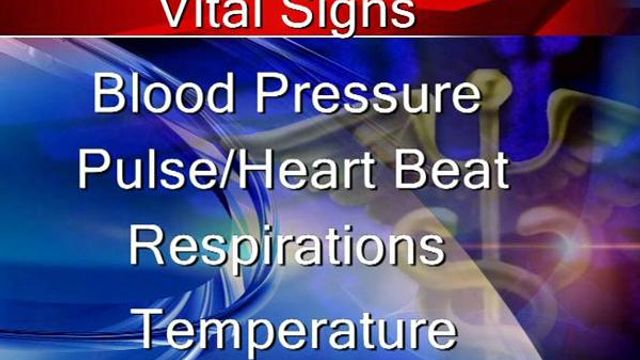Know your vital signs
Vital signs are indicators of one's overall health and consist of blood pressure, pulse or heart beat, respiration rate and temperature.
Posted — UpdatedDoctors say it's important to know healthy vital signs as abnormal findings could be an indicator of diseases and illnesses.
Blood pressure of less than 120 over 80 is considered a normal reading, according to the American Heart Association.
Stage 1 high blood pressure is considered a systolic pressure ranging from 140 to 159 or a diastolic pressure ranging from 90 to 99.
Having a systolic pressure of 160 or higher, or a diastolic pressure of 100 or higher, is considered stage 2 high blood pressure.
Stage 3 high blood pressure is classified as having systolic pressure greater than 180 and/or diastolic pressure above 110.
A normal pulse rate for a healthy person, while resting, can range from 60 to 100 beats per minute. It could be lower for those with heart disease.
Athletes could have a healthy pulse rate much lower than 60 beats per minute.
If a person is inactive, the pulse rate could be over 100. Too much thyroid hormone, fever, anemia, anxiety and certain medications can also speed up the pulse.
A normal respiratory rate, or the number of breaths a person takes, is normal at 14 to 18 breaths per minute. If the rate is too fast, it could be a sign of asthma or pneumonia.
The normal core body temperature is stated to be at 98.6 degrees Fahrenheit.
Heat stroke or an infectious disease can raise temperature. Hypothermia or some medications can bring it below normal.
WRAL's Dr. Allen Mask recommends everyone keep track of their vital signs by investing in a good thermometer and a blood pressure cuff. He also suggests people talk with their doctor to make sure findings are accurate.
• Credits
Copyright 2024 by Capitol Broadcasting Company. All rights reserved. This material may not be published, broadcast, rewritten or redistributed.





